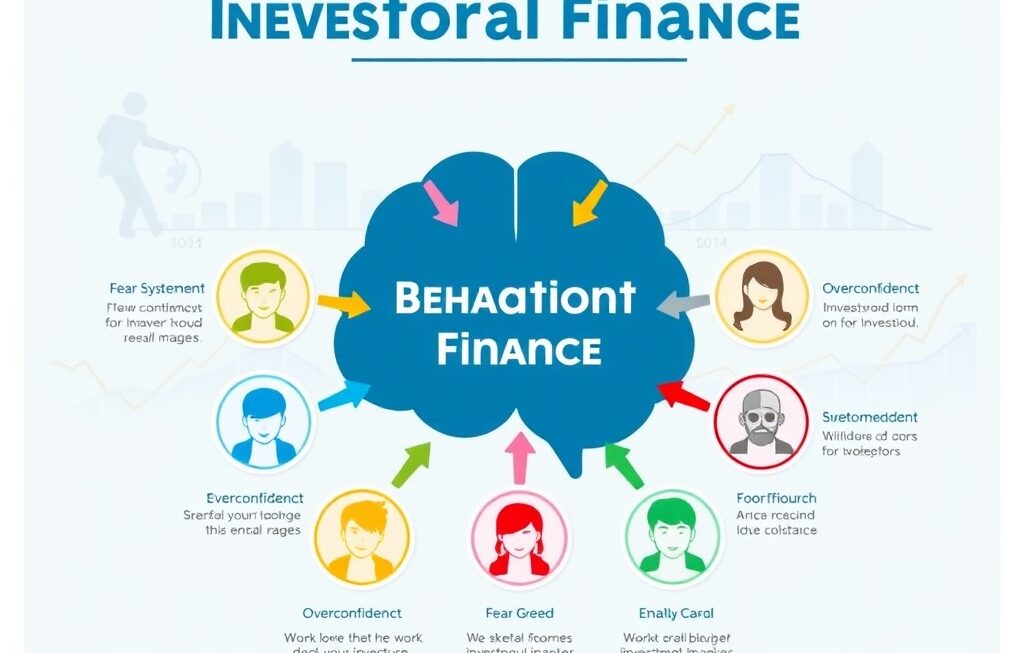Diversification is one of the most fundamental principles of successful investing. It helps reduce risk, smooth out volatility, and enhance long-term returns by spreading investments across different asset classes, sectors, and geographic regions. In today’s dynamic financial landscape, understanding how to build a diversified portfolio is more critical than ever.
This article explores what diversification means, why it matters, and how investors—whether beginners or professionals—can design portfolios that align with their financial goals and risk tolerance.
What Is Portfolio Diversification?
Portfolio diversification is the practice of investing in a variety of assets to minimize exposure to any single risk. The idea is simple: not all investments perform the same way at the same time. When one asset class declines, another may rise, helping to balance the overall portfolio.
A well-diversified portfolio doesn’t just include different stocks; it spans across bonds, real estate, commodities, international markets, and even emerging asset classes like cryptocurrencies. The goal is to reduce the impact of market volatility while maintaining opportunities for growth.
In essence, diversification is a strategy for not putting all your eggs in one basket.
Why Diversification Matters
Diversification is the foundation of risk management in investing. Markets are unpredictable—economic downturns, inflation, interest rate hikes, or geopolitical events can drastically affect specific assets. By spreading investments across various sectors and asset types, investors can protect their portfolios from sudden shocks.
Moreover, diversification can improve risk-adjusted returns. This means that investors can potentially earn better returns for the same level of risk compared to a concentrated portfolio. Studies show that diversified portfolios tend to outperform single-asset investments over the long run.
The Core Components of a Diversified Portfolio
A well-structured portfolio typically includes a mix of the following asset classes:
1. Stocks (Equities)
Stocks represent ownership in companies and are the primary driver of portfolio growth. They offer high return potential but come with greater volatility. Diversifying across sectors—such as technology, healthcare, energy, and consumer goods—helps mitigate company-specific risks.
Investors can also diversify geographically by investing in international and emerging market equities, which often perform differently from domestic markets.
2. Bonds (Fixed Income)
Bonds provide stability and income. They are generally less volatile than stocks and serve as a buffer during market downturns. Government, municipal, and corporate bonds each offer different risk-return profiles.
Adding bonds to a portfolio can reduce overall volatility and preserve capital during uncertain times.
3. Real Estate
Real estate investments, whether through direct ownership or Real Estate Investment Trusts (REITs), offer diversification benefits because property markets often move independently of stocks and bonds. estate also provides income through rental yields and potential appreciation.
4. Commodities
Investing in commodities like gold, silver, oil, or agricultural products adds another layer of diversification. Commodities often serve as hedges against inflation and currency fluctuations, helping to protect purchasing power.
5. Alternative Investments
Alternative assets such as hedge funds, private equity, or cryptocurrencies can offer unique risk-return characteristics that differ from traditional markets. However, these investments usually come with higher risk and lower liquidity, so they should be approached cautiously.
The Importance of Asset Allocation
Diversification is not just about holding many assets—it’s about allocating them strategically. Asset allocation determines how much of your portfolio goes into each asset class. The right mix depends on factors such as:
- Risk tolerance: How much volatility you can comfortably handle.
- Investment horizon: How long you plan to invest before needing the funds.
- Financial goals: Whether you’re saving for retirement, education, or wealth growth.
- Market conditions: Current economic cycles and interest rate environments.
A typical balanced portfolio might include 60% stocks and 40% bonds. However, this ratio can shift depending on an investor’s age, goals, and risk appetite. Younger investors may prefer a higher allocation to equities, while retirees might favor bonds for stability.
Geographic Diversification
Investing across different countries and regions reduces exposure to domestic economic fluctuations. For example, if the U.S. market experiences a downturn, emerging markets or European stocks may still perform well.
Global diversification also provides access to industries and opportunities not available in your home country, such as renewable energy projects in Asia or infrastructure development in Latin America.
Sector and Industry Diversification
Even within equities, diversification is crucial. Each sector behaves differently depending on market cycles. Technology stocks might thrive during innovation booms, while utilities or healthcare perform better in defensive markets.
Allocating investments across sectors ensures that your portfolio remains balanced and less sensitive to economic changes in one industry.
Time Diversification (Dollar-Cost Averaging)
Diversification is not just about what you invest in, but also when. Dollar-cost averaging involves investing a fixed amount regularly, regardless of market conditions. This strategy reduces the risk of investing a large sum at the wrong time and helps smooth out price volatility over the long term.
Diversifying with ETFs and Mutual Funds
Exchange-Traded Funds (ETFs) and mutual funds are efficient tools for achieving instant diversification. They pool money from many investors to buy a wide range of assets, offering exposure to entire markets or sectors through a single investment.
For example:
- Index funds replicate the performance of major stock indices like the S&P 500.
- Bond funds provide access to diversified fixed-income portfolios.
- Thematic ETFs focus on trends such as green energy or artificial intelligence.
These instruments are particularly useful for beginner investors seeking low-cost diversification.
Risk Management Through Diversification
Diversification doesn’t eliminate risk entirely—it manages it. There are two main types of investment risk:
- Systematic risk: Market-wide risks that affect all investments (e.g., interest rate changes, recessions).
- Unsystematic risk: Company or sector-specific risks (e.g., poor management, industry downturns).
Diversification helps reduce unsystematic risk, ensuring that no single investment can significantly impact the overall portfolio.
Common Mistakes to Avoid
Even well-intentioned investors can make diversification mistakes. Some common ones include:
- Over-diversification: Holding too many similar assets can dilute returns without reducing risk.
- Lack of rebalancing: Failing to adjust your portfolio over time can lead to unintended risk exposure.
- Ignoring correlations: Diversifying into assets that move together doesn’t truly reduce risk.
- Chasing trends: Investing based on short-term hype can compromise long-term balance.
Avoiding these pitfalls ensures your diversification strategy remains effective and aligned with your objectives.
The Role of Rebalancing
Over time, certain investments grow faster than others, causing your portfolio to drift away from its target allocation. Rebalancing involves periodically adjusting your holdings to maintain the desired mix.
For instance, if stocks outperform bonds and your portfolio shifts from 60/40 to 70/30, selling a portion of stocks and reinvesting in bonds restores balance. Rebalancing helps maintain risk discipline and ensures your strategy stays consistent.
Diversification and Behavioral Finance
Behavioral biases often lead investors to make emotional decisions, such as panic-selling during downturns or over-investing in trending assets. Diversification acts as a psychological anchor, reducing anxiety and encouraging long-term discipline.
By knowing that not all assets move in the same direction, investors are less likely to react impulsively to short-term market noise.
The Future of Portfolio Diversification
The digital era is introducing new tools and asset classes that enhance diversification. Artificial intelligence, robo-advisors, and data analytics now help investors design personalized portfolios based on real-time insights.
Additionally, ESG (Environmental, Social, and Governance) investing, cryptocurrency assets, and tokenized real estate are expanding diversification possibilities beyond traditional markets.
In the future, diversification will increasingly rely on technology and global interconnectedness, enabling smarter and more adaptive portfolios.

In Summary: How to Build a Diversified Portfolio
Building a diversified portfolio is both an art and a science. It requires balancing risk and reward, understanding correlations between assets, and maintaining discipline over time. The goal isn’t to maximize short-term profits but to achieve consistent, sustainable growth while minimizing downside risks.
In a rapidly evolving investment landscape, diversification remains the cornerstone of financial stability. Whether through traditional assets or innovative digital platforms, a well-diversified portfolio empowers investors to weather volatility and build lasting wealth.




